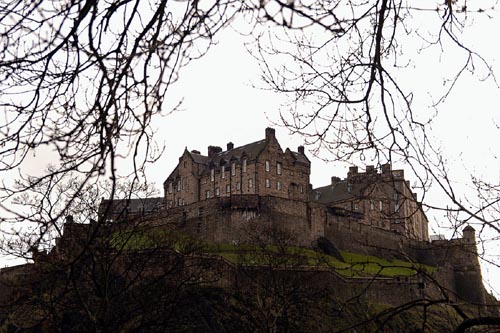SCOTLAND’S castles are proving almost as treacherous and bloody to modern day staff and visitors as they did to generations of nobles, soldiers and peasants.
Last year, an average of three people a week suffered injuries at castles, palaces and other properties managed by Historic Scotland.
A total of 152 tourists and workers suffered everything from a “sore bottom” to “dust in the eye” as a result of slips, trips and other mishaps in crumbling, stone edifices.

The number of accidents is a significant increase on the 118 suffered the previous year at properties managed by the quango tasked with maintaining historical monuments.
Figures released by the organisation show there has been a medieval battle’s-worth of casualties – 660 – in the past five years.
Edinburgh Castle – which attracts up to 200,000 visitors a month – recorded 36 casualties last year alone, 11 of whom suffered “falls on steps or stairs”.
One unlucky tourist suffered “bruising of forehead, cheekbone and right wrist, grazing on nose and hand”.
The year 2008/09 saw 43 people injured at the castle, including a visitor who broke their right ankle.
At Urquhart castle, on the banks of Loch Ness, there is more to worry about than mythical monsters. Last year, a member of the public “lost consciousness” as the result of a fall.
Bothwell Castle on the banks of the Clyde – a key battleground in the Scottish Wars of Independence – was the scene of visitor’s fall resulting in “cracked ribs”.
The semi-ruined Hermitage Castle, in the Scottish Borders, said to be among the most foreboding in Scotland, caused a “cut foot” in 2008/09 when a member of staff struck a fixed object.
And if slippery masonry doesn’t get you, unruly pets might. At Castle Campbell, near Dollar, Clackmannanshire, a member of the public was “scratched by dog”.
Elsewhere, the Antonine wall, designed to keep marauding Scots out of the Roman empire nearly 2000 years ago, continues to claim victims. One member of staff suffered “internal bruising” and another a “twisted ankle”.
At Tolquhorn castle, Aberdeenshire, a member of the public suffered a “sore bottom” after a “fall on steps or stairs”.
At Fort George, built near Inverness after Culloden to stop further Jacobite unrest, a member of the public “hit back of head” and a member of staff suffered “dust in eye”.
Skara Brae, the world-famous, 2,500-year-old neolithic settlement on Orkney, seems particularly treacherous, claiming eight injuries in 2009/10, and four the previous year.
Last year, a member of the public suffered a “banged head” at Skara Brae when they “atruck [a] fixed object”.
It seems even castle gift shops can be perilous places. Stirling Castle recorded 18 injuries last year, including a “retail” member of staff who was “hit by falling/moving object” which “struck [their] chin.”
One incident even involved a member of staff who suffered an injury while at a foreign landmark.
At America’s Mount Rushmore, where Historic Scotland staff recorded a 3D model of the famous sculptures, a member of staff struck their head after slipping in 2009/10.
Earlier this year it was revealed one of Scotland’s top stonemasons is suing Historic Scotland after he fell into a castle moat.
Malcolm Hutcheon, 41, was working on Kildrummy castle in Aberdeenshire, the site of medieval sieges and a failed Jacobite rising, when the accident happened.
The mason plummeted nearly ten feet into the dry moat after a makeshift bridge gave way, which he said left him with serious injuries to his leg.
He had been part of a four-man team tasked with clearing moss from the castle as part of restoration work, and was pushing a wheelbarrow full of moss across the bridge when the accident happened.
A spokesman for Historic Scotland said: “Although there has been a fluctuation in the number of accidents recorded at Historic Scotland sites, there is no evidence that accidents are becoming more common.
“Over the last five years, the number of accidents recorded was 116, 143, 118, 131 and 152. To put these figures in perspective, the total number of visitors to our sites in each of those years was around three million – an accident rate of between one in 20,000 and one in 26,000.
“The fluctuation in numbers can be accounted for by a combination of factors, including a variation in the overall number of people visiting Historic Scotland sites, and better recording and reporting of accidents.
“We have a rigorous health and safety policy in operation at our properties, and will continue to do all we can to ensure the health and safety of all our staff and visitors.”